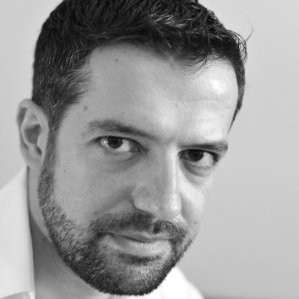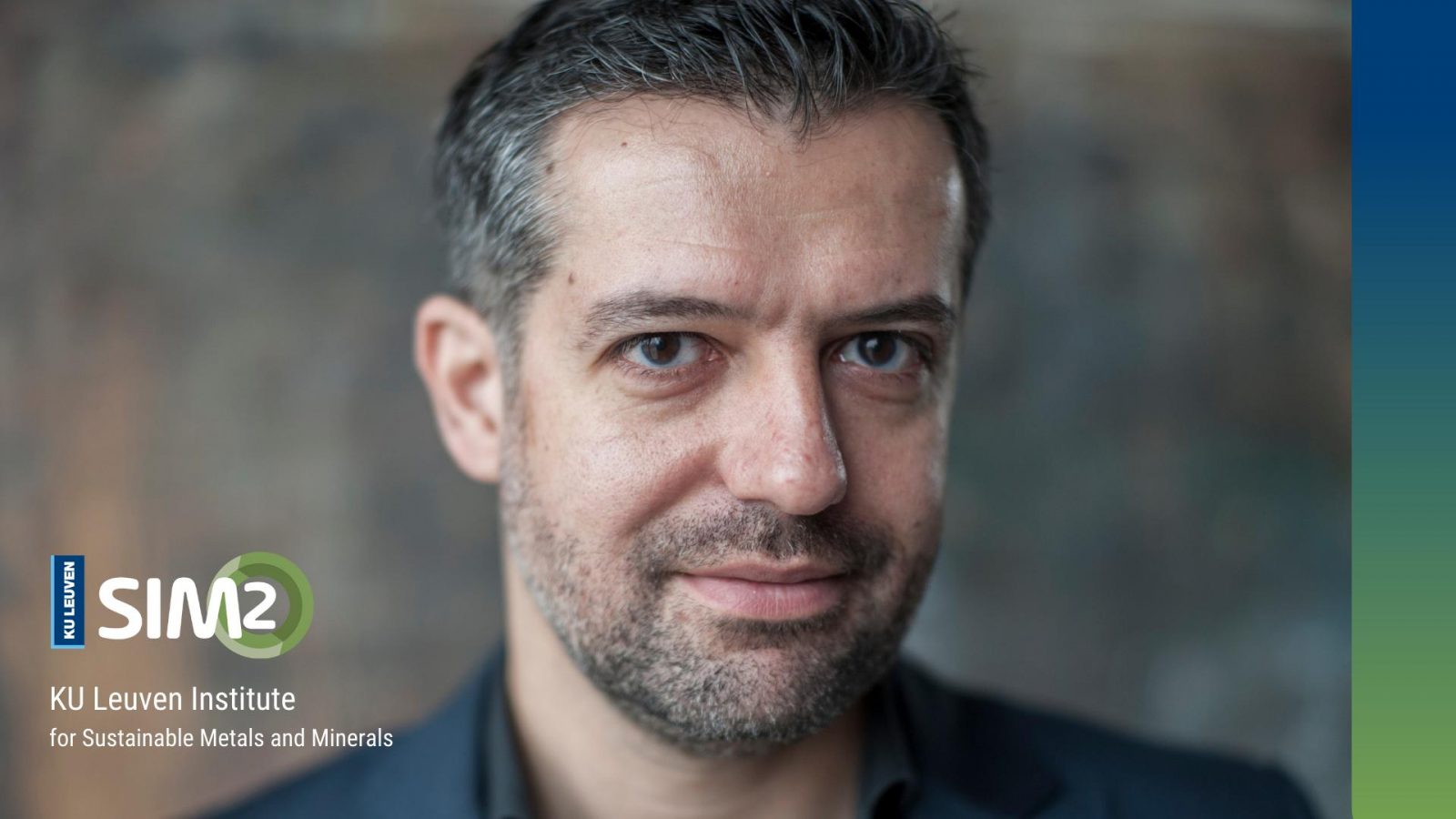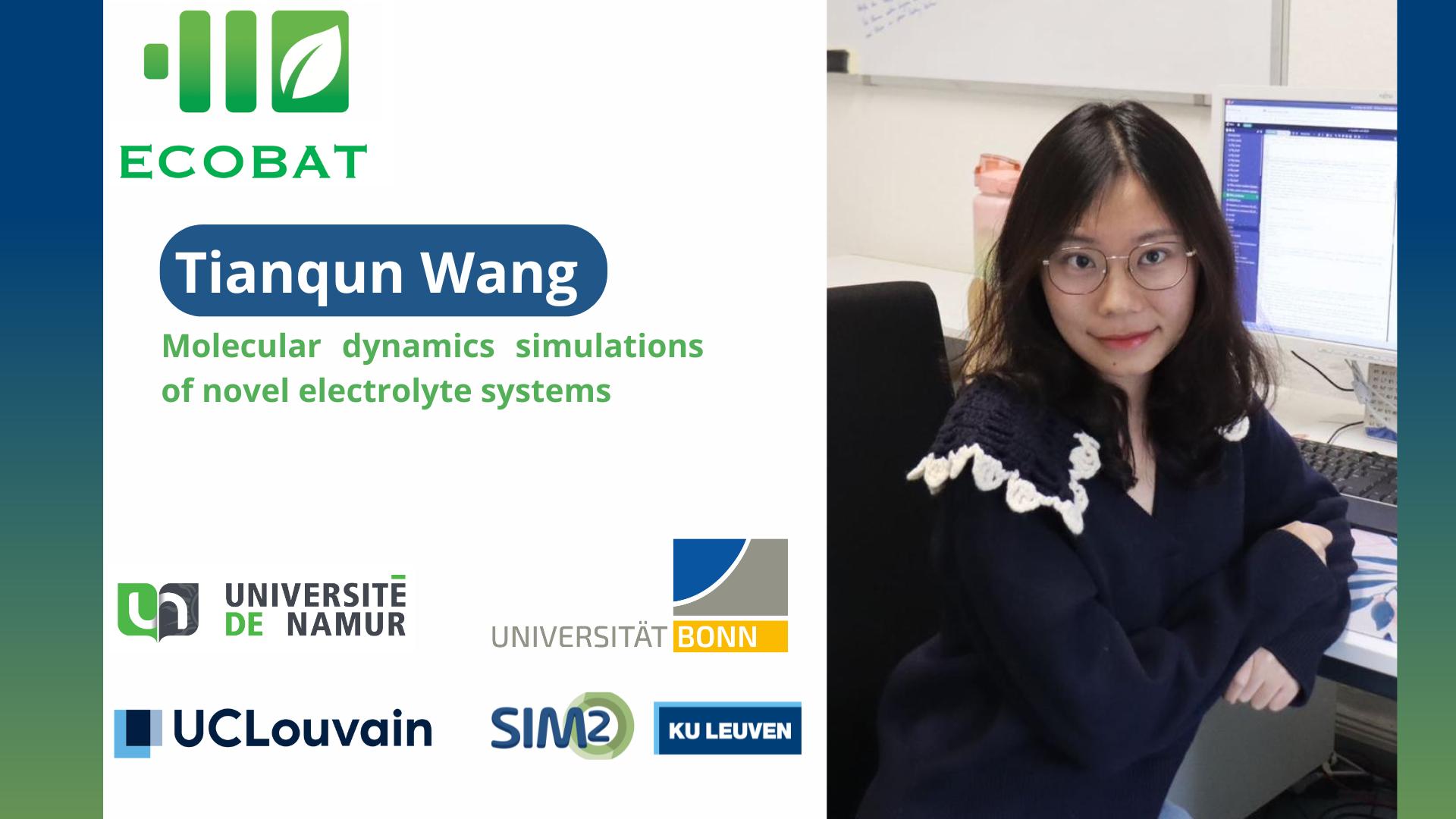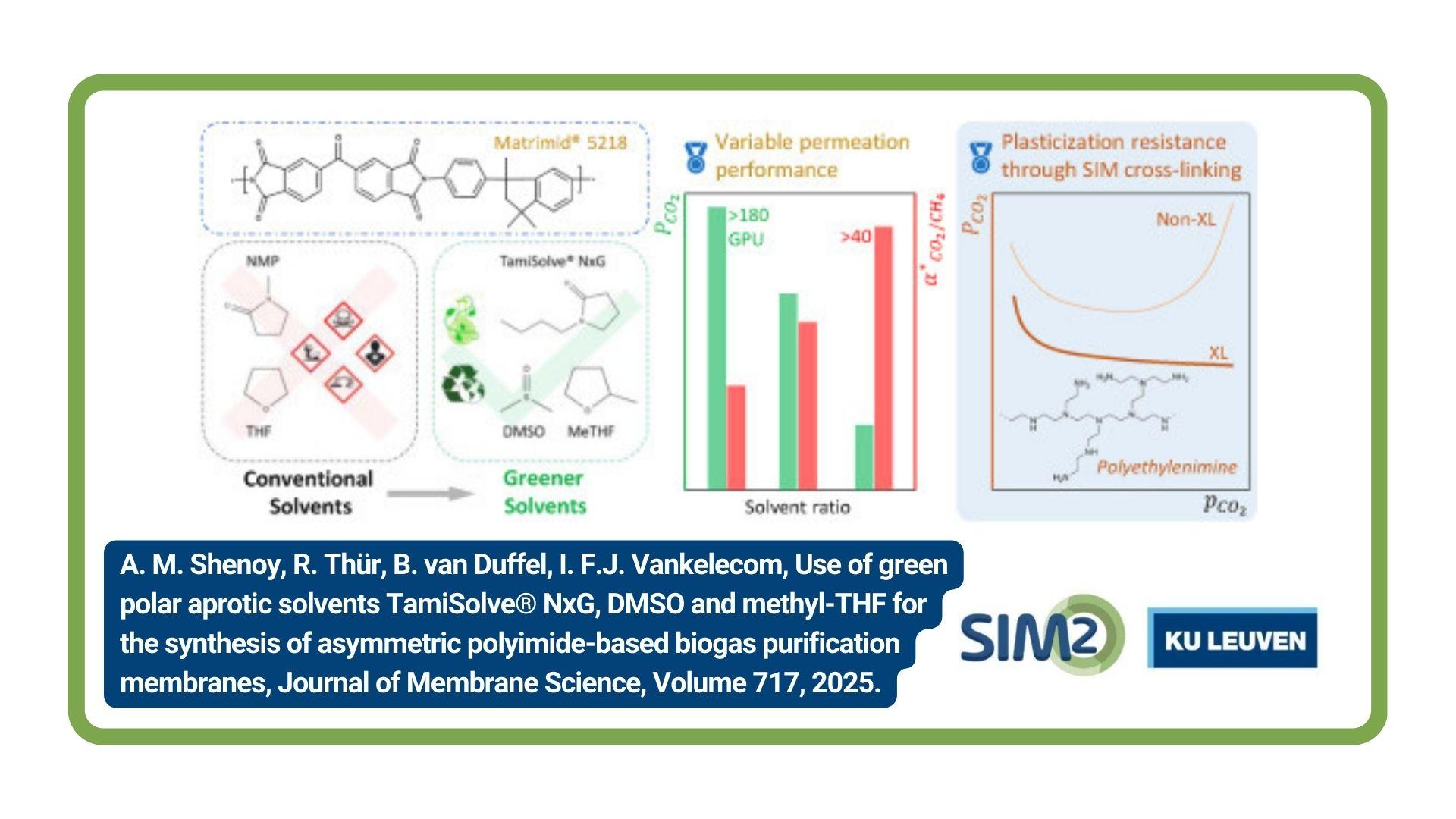As a former ERC Grantee, Prof. Dimitrios Sakellariou is a Greek KU Leuven Professor working at the cMACS division in the Department of Microbial and Molecular Systems (M²S). His unique expertise, which is of high value for SIM², is high-resolution Magnetic Resonance. In the present SIM² interview you get to know more about Dimitrios’ research activities and his travels around the world.
SIM² KU Leuven’s mission is to contribute to the environmentally friendly production and recycling of metals, minerals and engineered materials, supporting the transition to a climate-friendly, circular-economy. How does your research fit in here?
Our research is highly motivated by real world problems impacting society. We are driven by problems related to the environment, health and energy. We are also determined to bring forward science that can have a really positive impact to the society and our everyday lives. Most of our research advances aim at developing methods and techniques that help to solve problems such as understanding the composition and morphology of materials at the atomic level and contribute to the establishment of the relation between molecular structure and dynamics with function.
We also wish to provide new diagnostic instruments not only for human beings but also for materials. In other words, we believe that by providing science, medicine and society with the best possible bespoke analytical tools, we will contribute to the mission of SIM² KU Leuven that you described. We are perfectly focused to these goals.
As a former ERC Grantee, you are an expert in the domain of high-resolution Magnetic Resonance. How do you see the synergies with other SIM² research groups here? Any new ideas about pushing the frontiers of interdisciplinarity?
Magnetic Resonance is an intrinsically interdisciplinary technique. Most people are aware of MRI (Magnetic Resonance Imaging) from its abundant presence in hospitals and in TV series, and less of Magnetic Resonance Spectroscopy, which offers spectral fingerprints of molecules and materials.
Our team is composed of real experts with PhDs in NMR, and demonstrated experience in developing NMR and MRI. We use, however, basic knowledge from many disciplines such as electromagnetism, quantum chemistry, material science, data and image processing and many more.
Because of our unique expertise in KU Leuven we foresee a large amount of collaborations within the SIM² pool of research groups. In fact an early synergy project with Prof. Swennen and Prof. Pontikes brought us in the gravitational field of SIM² some years ago and since then we have become proud members.
Our extremely innovative project deals with NMR of materials containing important quantities of metals, which is a very challenging task for Magnetic Resonance and an opportunity to innovate at many levels. Instrumentation, methodology and interpretation of the measured data must be reworked if we want to understand and exploit magnetic resonance on metals.
Furthermore, many other members of SIM² have expressed interest in characterising materials, a domain in which we have long experience, but also in testing and finding solutions to relevant problems that they may face in their work. Our newest project involves work at the interface between 3D printing, material science, magnetic resonance and biomedicine to improve the quality of MRI imaging and was granted funding by KU Leuven.
What are the other key tracks in your research?
Over the years we have explored many areas in magnetic resonance. High and ultra-high field NMR is the main subject of our research. Miniaturisation, hyperpolarisation, and in-situ characterisation of materials and processes (reactions) describe well our research tracks. Although the background in our laboratory is NMR applied to solid samples, during the last 15 years we developed our own instrumentation using miniaturisation and rare-earth minerals (NdFeB or SmCo) as the sources of the magnetic field.
Permanent magnets in Magnetic Resonance opened a new window of opportunities in transforming this research domain and bring it closer to industry and society. Who would expect to bring an MRI scanner to the patient and not the other way round? Who would expect to bring the NMR inside a fumehood and use it exclusively for the follow up of a reaction? Who would expect that geological studies would benefit from single-sided NMR sensors, which work like molecular stethoscopes ?
Currently we are further developing these technologies and we are applying them in the field of sorption in microporous material, rock cores, polymers and membranes. This work is done in collaboration with colleagues at the cMACS (Department of Microbial and Molecular Systems (M²S)) in KU Leuven and private companies.
Over the past years you have published numerous peer-reviewed papers. Which paper of yours are you particularly pleased with?
Indeed we have published a considerable number of papers. I am particularly attached to some papers with great significance since they correspond to answers to problems that before were thought as being impossible or at least very difficult to solve. These papers in my own opinion have contributed most in offering jumps in theoretical understanding, novel design and experimental realisation.
One such paper deals with amorphous solids and nuclear magnetic resonance, which for most scientists are lost cases when it comes to recovering resolution and useful information from spectroscopy. Our paper showed that disorder may be correlated and in such cases the material itself can be used to self-correct and offer high-resolution information, if you know of course how to record it!
In a similar way, NMR was never imagined in the presence of inhomogeneous magnets. We published a number of papers breaking this illusion, thus opening the way to portable NMR and MRI high-resolution applications.
Do you have any advice for PhD students in terms of publishing papers or executing their PhDs?
They have to be patient, persistent and to target important questions. Time runs faster now and everyone is eager for results, and numbers. They should, however, avoid publishing just for the sake of it. Last advice would be to work on a topic they really like. Only if you are in love with what you do, you have motivation and you will be at the peak of your performance.
On a more personal level, are there any game-changing moments in your research career? I am referring to moments which made you fundamentally rethink your research focus and/or strategy?
I could enumerate many such moments. One of them was my decision to leave my country to study abroad. I was very lucky to meet amazing teachers and giants of Magnetic Resonance like Lyndon Emlsey, Alexander Pines and Erwin Hahn, who helped me think out of the box and be passionate about teaching and research.
Every time I moved from one country to another a game-changing moment occurred. New ideas, new projects, new incentives. Coming to join KU Leuven offered unique possibilities to collaborate with world class experts in the field of materials, catalysis, membrane technology within cMACS, and to build a world-class Magnetic Resonance laboratory.
What attracts you in research? How do you stay motivated?
Working in Magnetic Resonance research remains for me extremely exciting even after 20 years of experience in this field. Multidisciplinary questions, collaborations with scientists from other fields and continuous learning from my students are the most enriching experiences for me. Competition is important, but deep down I believe limits come from within oneself. Knowing the international state of the art and going beyond your own limits is what motivates my work.
How is it a Greek professor to live and work in Belgium? What do you miss? What do you don’t miss?
I left my country in 1994 and that offered me opportunities that I would never have had otherwise. After living in France and the USA, I decided to come to Belgium in 2017 in order to make a world-class NMR laboratory according the KU Leuven’s objectives. After a slow initial period, this is now rapidly taking shape. Although we still have a long way to cover…
Therefore, I enjoy living and working in Belgium despite the initial inconveniences that come along with every relocation. Besides, Greeks are well known for their resilience and their ability to adapt to different environments. I do miss my family and my friends from Greece. Moving to Belgium defined a life-changing moment since it triggered a new beginning not only in my scientific career but also in my personal life.
Finally, just for our readers to know, what is the strangest talent you have?
I have no idea if this is a strange talent but I know how to cook traditional Greek moussaka and I’m learning (slowly) how to play the cavaquinho, a Brazilian music instrument.
Thank you for this interview. We wish you all the best in your research endeavours.
[Interview: Peter Tom Jones; Credits photo: Didier Goupy (https://www.didiergoupy.com)]
Some key publications by Prof. Dimitrios Sakellariou
- R. de Oliveira-Silva, E. Lucas-Oliveira, A. G. Araujo-Ferreira, W. Trevizan, E. L. G. Vidoto, D. SAKELLARIOU and T. J. Bonagamba, "A benchtop single-sided magnet with NMR well-logging tool specifications – Examples of application", J. Magn. Reson. in press (2020). https://doi.org/10.1016/j.jmr.2020.106871
- M. Tayler and D. Sakellariou, "Low-cost, pseudo-Halbach dipole magnets for NMR", J. Magn. Reson., 277, 143 (2017). https://doi.org/10.1016/j.jmr.2017.03.001
- P. Judeinstein, F. Ferdeghini, R. Oliveira-Silva, J-M. Zanotti and D. Sakellariou, "Low-field single-sided NMR for one-shot 1D-mapping: Application to membranes", J. Magn. Reson., 277, 25 (2017). https://doi.org/10.1016/j.jmr.2017.02.003
- C. Chou, F. Ferrage, G. Aubert and D. Sakellariou, "Simple method for the generation of multiple homogeneous field volumes inside the bore of superconducting magnets", Sci. Rep., 5, 12200 (2015). 10.1038/srep12200
- D. Sakellariou, G. Le Goff and J.-F. Jacquinot, "High-resolution, high-sensitivity NMR of nanolitre anisotropic samples by coil spinning", Nature, 447, 694 (2007). URL Nature
Biography Prof. Dimitrios Sakellariou
 Prof. Sakellariou is a Greek Professor and SIM² KU Leuven Member at the cMACS division in the Department of Microbial and Molecular Systems (M²S) at KU Leuven, where he has been a faculty member since 2017. Dimitrios completed his PhD in Nuclear Magnetic Resonance at the Ecole Normale Supérieure de Lyon, after a Master’s in Particle and Nuclear Physics at UCBL Lyon and undergraduate studies in Chemistry at the Ecole Normale Supérieure de Lyon. After obtaining a postdoctoral fellowship to join the Department of Chemistry at University of California Berkeley and the Lawrence Berkeley National Laboratory (2000-2004), Dimitrios joined the Commissariat à l’Energie Atomique (FR) as principal investigator senior scientist before moving to Leuven in 2017. In 2008 he received and ERC Starting grant for the R-EvolutioNMR project. His research interests lie in the development of new instruments and methods using magnetic resonance principles for the analysis of complex systems.
Prof. Sakellariou is a Greek Professor and SIM² KU Leuven Member at the cMACS division in the Department of Microbial and Molecular Systems (M²S) at KU Leuven, where he has been a faculty member since 2017. Dimitrios completed his PhD in Nuclear Magnetic Resonance at the Ecole Normale Supérieure de Lyon, after a Master’s in Particle and Nuclear Physics at UCBL Lyon and undergraduate studies in Chemistry at the Ecole Normale Supérieure de Lyon. After obtaining a postdoctoral fellowship to join the Department of Chemistry at University of California Berkeley and the Lawrence Berkeley National Laboratory (2000-2004), Dimitrios joined the Commissariat à l’Energie Atomique (FR) as principal investigator senior scientist before moving to Leuven in 2017. In 2008 he received and ERC Starting grant for the R-EvolutioNMR project. His research interests lie in the development of new instruments and methods using magnetic resonance principles for the analysis of complex systems.

Want to know more about SIM²?
SIM² KU Leuven is the KU Leuven Institute for Sustainable Metals and Minerals (SIM² in short). SIM² is one of the six official KU Leuven Institutes that were endorsed by the KU Leuven Academic Council. SIM² has more than 240 members, coming from a wide range of (interdisciplinary) research groups and departments at KU Leuven. SIM²’s missions is “to develop, organise & implement problem-driven, science-deep research & future-oriented education, contributing to the environmentally friendly production & recycling of metals, minerals & engineered materials, supporting (…) a climate-friendly, circular-economy”. Read more about the new KU Leuven Institute here.
- Read more in this featured article in Geniaal.
- Follow SIM² on LinkedIn: https://www.linkedin.com/company/18118889
- Interviews with other SIM² colleagues: https://kuleuven.sim2.be/meet-our-colleagues/






